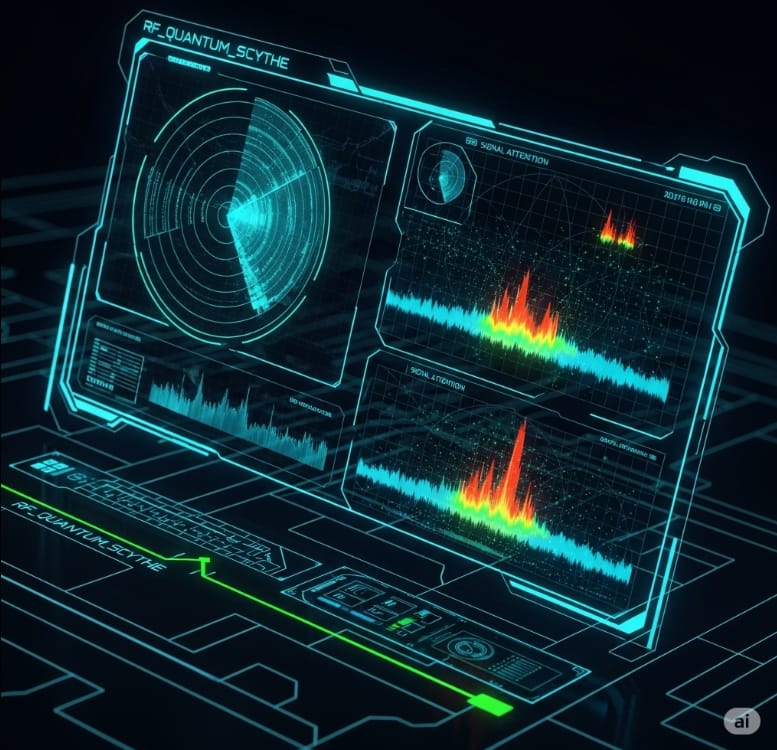PODCAST: explore the RF_QUANTUM_SCYTHE Signal Attention Visualizer Server, a WebSocket server designed to display real-time signal attention maps. This Python-based server utilizes asynchronous operations to manage client connections, register and unregister users, and broadcast attention data to connected clients. It can operate in a demo mode that generates synthetic attention data or in a standard mode where external components provide the data for visualization, which is then processed by a SignalAttentionVisualizer to create radar sweep data for display. The server is configured to run in a background thread, ensuring continuous operation for visualizing complex signal patterns.
# RF_QUANTUM_SCYTHE Signal Attention Visualizer
# WebSocket server that displays signal attention maps in real-time
The RF_QUANTUM_SCYTHE Signal Attention Visualizer Server handles and broadcasts real-time signal attention data to clients through a series of coordinated components, primarily utilizing a queue and WebSocket communication.
Here’s a breakdown of the process:
- Data Ingestion: Signal attention data is added to a centralized
attention_queue. This is done via theadd_attention_datafunction, which simply putsattention_featuresinto the queue. In a normal operational mode, external components would call this function to provide visualization data. In demo mode, synthetic data generated bygenerate_demo_datais periodically added to this queue. - Queuing Mechanism: The
attention_queueacts as a buffer, storing incoming attention data until it can be processed and sent to clients. - Producer Handler: For each connected client, a
producer_taskruns aproducer_handlerasynchronously. This handler is responsible for sending attention data to the specific client’s WebSocket.- The
producer_handlercontinuously checks theattention_queuefor new data, specifically every 100 milliseconds usingasyncio.sleep(0.1). - When new
attention_datais available in the queue (i.e.,while not attention_queue.empty():), it retrieves the data usingattention_queue.get(). - The retrieved
attention_datais then processed by an instance ofSignalAttentionVisualizertogenerate_radar_sweep_data. This suggests the raw attention data is transformed into a format suitable for visualization, perhaps for a radar-like display. - The processed
radar_datais then converted into a JSON string (json.dumps(radar_data)). - Finally, this JSON message is sent directly to the connected client via
await websocket.send(message).
- The
- Client Connection Management:
- When a new client connects, the server’s
handlerfunction callsregisterto add the client’s WebSocket to a set of connected clients, and logs the new connection. - If a client disconnects or an error occurs (like
websockets.exceptions.ConnectionClosed), theunregistermethod is called to remove the client from the set. - While the
producer_handlersends data to individual clients, the server also has abroadcastmethod that can send a message to all connected clients simultaneously, although the attention data flow specifically uses theproducer_handlerfor each client.
- When a new client connects, the server’s
- Server Operation: The
AttentionVisualizerServerinitializes with aSignalAttentionVisualizerinstance. The server can be started in a background thread usingstart_background_server, which runs thestart_servermethod usingasyncio.run. This setup ensures the server continuously listens for new connections and manages data flow.
In essence, incoming attention data is queued, and multiple “producer” tasks, one for each connected client, pull from this shared queue, transform the data, and send it in real-time over individual WebSocket connections.